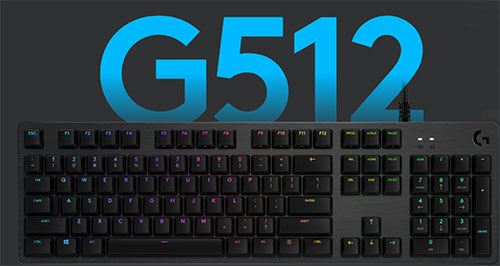Logitech G512 Carbon mechanical gaming keyboard
Performance and Conclusion
The Logitech G512 Carbon offers a USB 2.0 pass-through port and if you plan on using it, it’ll take up another USB port on your PC. The passthrough port is ideal for charging your mobile phone or to connect a wireless receiver if you got a wireless mouse.

The Tactile switches on the Logitech 512 Carbon is primarily aimed at FPS gaming users in mind. That said we found the keyboard to be an all rounder for even day to day typing needs as well. The keyboard is comfortable to use and responsive. We loaded up a few rounds of Apex Legends, Battlefield V and Far Cry 5 and in all instances the Logitech 512 Carbon excelled in it’s delivery.
It never missed any key presses and the feedback from the tactile switches were precise and accurate, catering to a totally immersive experience. Having used many mechanical keyboards in the past, the overall experience from the Logitech 512 Carbon has far exceeded our expectations. The Romer-G switches certainly does impress.
Conclusion
With a lifespan of 70 million clicks, the Romer-G switches are meant for gamers in mind. It’s good to see more competition in the market for mechanical keyboard switches as that’s what drives innovation. In this case Logitech does seem to have understood the gamers’ requirements well.
The Logitech 512 Carbon retails around AU$149 which makes it very competitively priced. It ticks all the right boxes that make a good mechanical gaming keyboard and comes with a 2 year manufacturer warranty. Our only issue with the keyboard is not having dedicated media controls and having to use the function keys.
With its brushed metal finish and impressive RGB lighting effects there’s more to love with the 512 Carbon than hate. If you would prefer to have a wrist pad as well, Logitech offers the 513 Carbon, which is essentially the same keyboard. Overall this is a well thought after product by Logitech and if you’re on the lookout for an upgrade, do give it a go; you will not regret it.
| Table of contents |
| 1. Introduction |
| 2. The Design |
| 3. Performance and Conclusion |

